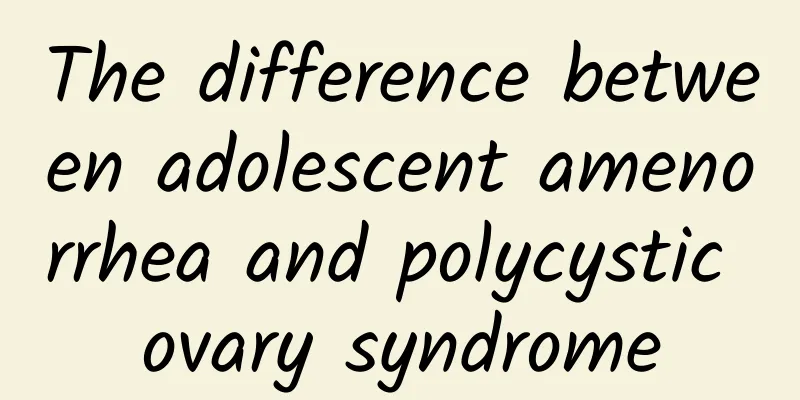Is there a mass in the right abdomen of a female with pelvic effusion?

|
Pelvic effusion may cause a mass in the right abdomen, but not all patients will experience this symptom. The symptoms of pelvic effusion vary depending on the cause, and common causes include inflammation, cysts, and menstrual abnormalities. Identifying the cause is the key to treatment, and it can be diagnosed through ultrasound examinations, blood tests, and other means. Treatment includes antibiotic treatment, surgical intervention, and lifestyle adjustments. 1 Possible Cause Inflammatory factors: Pelvic effusion is mainly caused by pelvic inflammation, such as pelvic inflammatory disease (PID), which can manifest as lower abdominal pain, fever, abnormal vaginal discharge, and in severe cases, a feeling of mass. Inflammation causes masses or abscesses to form in the ovaries and fallopian tubes, resulting in discomfort in the right abdomen. Cysts and tumors: If a large cyst on the ovary or fallopian tube is present, it may compress surrounding tissues and feel like a mass. The possibility of a malignancy should be raised, especially if the mass is accompanied by weight loss or irregular vaginal bleeding. Non-pathological factors: During the ovulation period, some normal women may develop physiological fluid accumulation, which is usually nothing to worry about. However, if the accumulation is excessive or causes other symptoms, timely treatment is required. 2 Treatment Anti-inflammatory treatment: If infected pelvic effusion is confirmed, broad-spectrum antibiotics can be used for treatment. Commonly used drugs such as ceftriaxone once a day, the course of treatment is adjusted according to the condition, levofloxacin or metronidazole, the purpose is to control inflammation and prevent the condition from worsening. Surgical treatment: For masses caused by ovarian cysts or abscesses, surgical removal can be selected. Laparoscopy and surgery are currently common methods, with less trauma and quick recovery. For suspected tumors, it is necessary to evaluate whether they are benign or malignant, and develop a personalized surgical plan. Lifestyle adjustments: During the recovery period of inflammation, it is recommended to rest more and avoid strenuous exercise; the diet should be light, and more high-fiber and vitamin-rich foods should be consumed, such as fresh fruits and vegetables; spicy and irritating foods should be avoided to reduce the burden on the pelvic cavity. The feeling of a mass on the right side of the abdomen accompanied by pelvic effusion is not a minor problem and may be caused by a more serious cause. If the symptoms persist or are accompanied by other abnormal manifestations, it is recommended to seek medical attention as soon as possible and receive professional examinations and treatment to avoid affecting your health and fertility. |
<<: Can I take donkey-hide gelatin if I have cervical adhesion?
Recommend
Do you really know the symptoms of adnexitis?
Do you really know the symptoms of adnexitis? Wha...
The most important preventive measures for dysmenorrhea
Dysmenorrhea is a type of gynecological disease, ...
What are the hazards of ovarian cyst combined with pregnancy
What are the dangers of ovarian cyst combined wit...
Can a bad temper cause delayed menstruation?
Can a bad temper cause delayed menstruation? 1. A...
What are the causes of pelvic inflammatory disease?
Pelvic inflammatory disease has a certain impact ...
Cancer-causing traps you must know when barbecuing during Mid-Autumn Festival! Nutritionist teaches "Traffic Light BBQ Secrets" to grill healthy and delicious food
When the traditional Mid-Autumn Festival comes, w...
Experts teach you how to correctly and effectively prevent candidal vaginitis
When it comes to candidal vaginitis, many female ...
What should patients with pelvic inflammatory disease eat?
Patients with pelvic inflammatory disease must pa...
The dangers of Bartholinitis
At present, with the continuous improvement of hu...
Healthy and without burden! 3 tips for choosing drinks to pair with zongzi
On a sunny summer day, eating rice dumplings with...
Do you know what are the early symptoms of cervicitis?
What are the early symptoms of cervicitis? Expert...
How to relieve the pain of dysmenorrhea? How to relieve the pain of dysmenorrhea
How to relieve the pain of dysmenorrhea? How to r...
Can pelvic effusion cause abdominal pain?
Can pelvic effusion cause abdominal pain? After s...
Cost of treating threatened abortion with an old Chinese doctor
In recent years, the country's active advocac...
How much does a myomectomy cost? How much does a myomectomy cost?
Female friends are no strangers to uterine fibroi...









